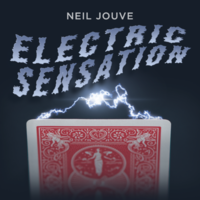
 How about a little honesty?
Report this review
How about a little honesty?
Report this review
Verified buyer
Pro Privacy ON
(login to see reviewer names)
on July 3rd, 2017
The June issue of Magic Monthly is packed with 5-star material. Unfortunately, the credit card to
playing card trick and free gimmick is misleading and disappointing.
What you get is a playing card-sized “credit card” which doesn’t allow you to perform the snap change shown in the promotional video, unless you want to start with something that doesn’t look like a normal credit card. Interestingly the magazine illustration shows a correctly-sized-gimmick and not the one that comes with the issue.
The actual effect involves “finding” your credit card in a shuffled deck. After returning this “card” to your wallet, a chosen card mysteriously disappears from the pile and reappears in your billfold. While you can certainly cover part of the gimmick to make it appear “real”, the instructions say to “very openly place it into your wallet…”
I do appreciate the freebie and the gimmick is of high quality, however having a misleading video and illustration is a bit much.
Otherwise, there is plenty of excellent material.
Nathan Kranzo presents a breath mint to breath spray switch. Murray SawChuck does a similar effect with a Tic Tac and lighter in his Penguin Live lecture. I like Mr. SawChuck’s one-handed handling better than Mr. Kranzo’s two-hander and was surprised it wasn’t referenced.
Pablo Amira unveils a mental epic done with business cards that aims to finish bigger than usual. I found the instructions a bit confusing but you can figure it out if you work through the effect. This is a nice impromptu trick that doesn’t require a switch or force for the third reveal.
David Parr’s “Past Present Future” is an easy to do effect utilizing the cut-deeper force. However, you will have to do some homework on how to interpret cards (references provided). There are no forces so your readings are based on chance.
I like Dan Huffman’s “Sleep Walker” and Banacheck’s “Crystal Clear” but both require participant cooperation.
Dan Paulus’ “Million Dollar Olram” combines US Grant’s “Million Dollar Mystery” with Ed Marlo’s “Olram Subtletry”. I feel the Grant classic stands alone, but here’s a way to enhance the ending.
John Carey’s “Double Dutch” provides good cover for those who think the cross-cut force is too obvious.
What you get is a playing card-sized “credit card” which doesn’t allow you to perform the snap change shown in the promotional video, unless you want to start with something that doesn’t look like a normal credit card. Interestingly the magazine illustration shows a correctly-sized-gimmick and not the one that comes with the issue.
The actual effect involves “finding” your credit card in a shuffled deck. After returning this “card” to your wallet, a chosen card mysteriously disappears from the pile and reappears in your billfold. While you can certainly cover part of the gimmick to make it appear “real”, the instructions say to “very openly place it into your wallet…”
I do appreciate the freebie and the gimmick is of high quality, however having a misleading video and illustration is a bit much.
Otherwise, there is plenty of excellent material.
Nathan Kranzo presents a breath mint to breath spray switch. Murray SawChuck does a similar effect with a Tic Tac and lighter in his Penguin Live lecture. I like Mr. SawChuck’s one-handed handling better than Mr. Kranzo’s two-hander and was surprised it wasn’t referenced.
Pablo Amira unveils a mental epic done with business cards that aims to finish bigger than usual. I found the instructions a bit confusing but you can figure it out if you work through the effect. This is a nice impromptu trick that doesn’t require a switch or force for the third reveal.
David Parr’s “Past Present Future” is an easy to do effect utilizing the cut-deeper force. However, you will have to do some homework on how to interpret cards (references provided). There are no forces so your readings are based on chance.
I like Dan Huffman’s “Sleep Walker” and Banacheck’s “Crystal Clear” but both require participant cooperation.
Dan Paulus’ “Million Dollar Olram” combines US Grant’s “Million Dollar Mystery” with Ed Marlo’s “Olram Subtletry”. I feel the Grant classic stands alone, but here’s a way to enhance the ending.
John Carey’s “Double Dutch” provides good cover for those who think the cross-cut force is too obvious.
Add a comment
OPEN BOX
$7.71 (61% OFF)
57
Bestsellers
See all bestsellers
COOL BOX
7% now claimed
1
8
:
3
1
:
1
9
remaining

Act Builder beta




























